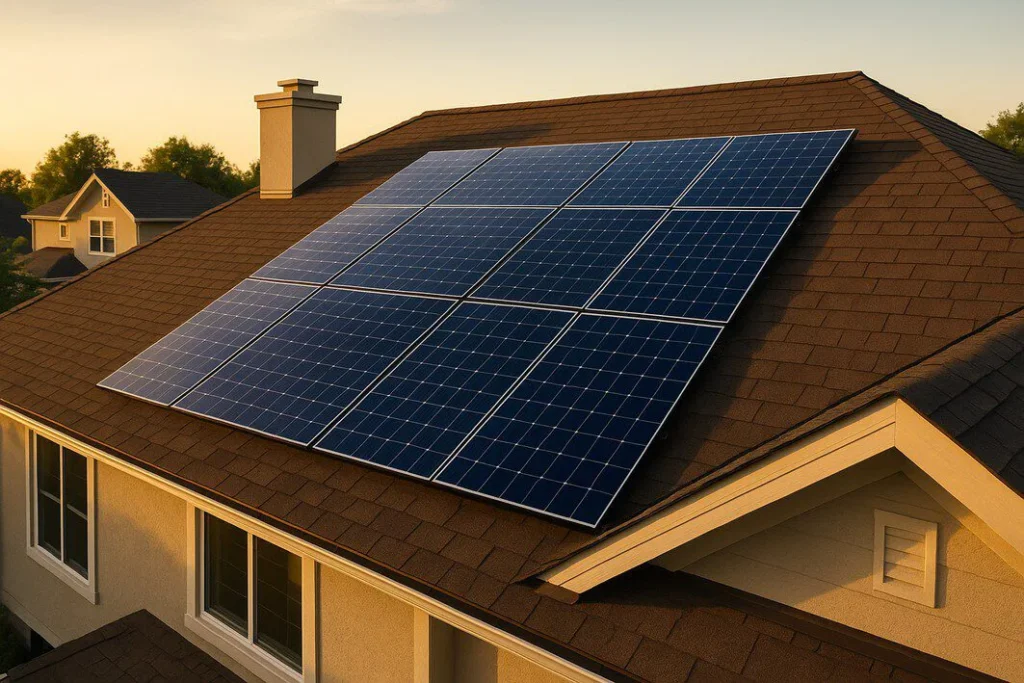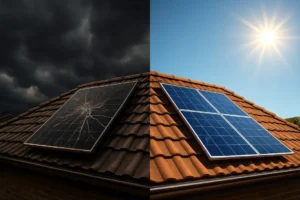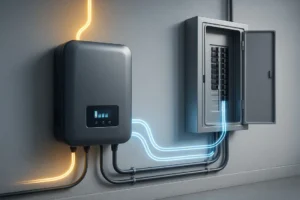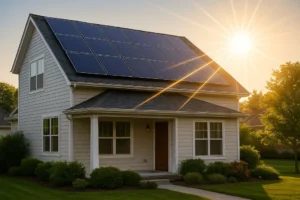Diving into the world of residential solar energy can feel like learning a new language. You’ll encounter terms, standards, and rules of thumb that aren’t common knowledge. Among these, you might hear about the “33% rule” and the “20% rule.” While they sound technical, understanding them is key to appreciating the thought that goes into a safe and efficient solar installation.
Table of Contents
This guide will demystify these concepts for you. We’ll explore what is the 33% rule in solar panels and what is the 20% rule for solar panels, so you can feel more confident in your journey toward energy independence.
How Do Solar Panels Work? A Quick Refresher
Before we tackle the rules, let’s quickly review the basics. Understanding how do solar panels work provides the foundation for why these design principles exist.
At its core, a solar energy system uses photovoltaic (PV) panels to convert sunlight into direct current (DC) electricity. Because your home runs on alternating current (AC) electricity, this DC power must first pass through a crucial component called a solar inverter. The inverter converts the DC electricity into usable AC electricity that can power your appliances, lights, and electronics. Any excess energy can be sent back to the grid or stored in a battery. These rules help govern the physical layout of the panels and the electrical relationship between the panels and the inverter.
What is the 33% Rule in Solar Panels? (The “Firefighter Rule”)
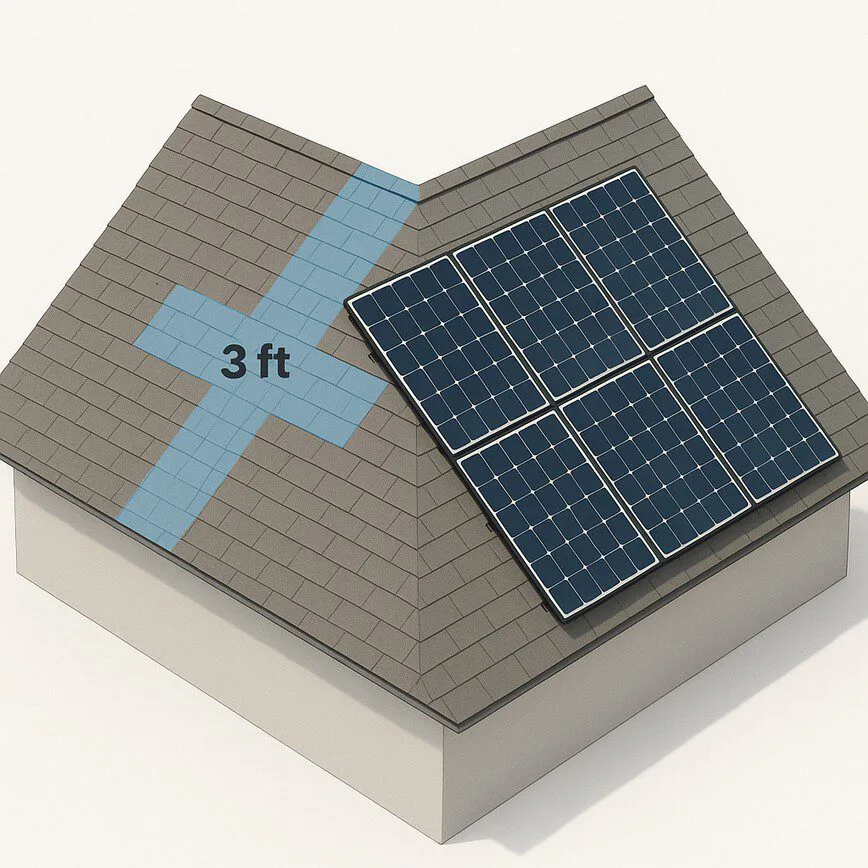
The “33% rule” is a common way of referring to fire code regulations designed to ensure firefighter safety. It’s not about the panels themselves, but about maintaining clear access on your roof in case of an emergency. While often simplified as leaving 33% of the roof clear, the actual regulations are more specific.
The National Electrical Code (NEC) and local fire codes mandate that solar installations leave clear pathways for firefighters to walk, cut ventilation holes, and navigate the roof safely. These requirements typically include:
- Ridge Access: A 3-foot wide clear path along the horizontal ridge of the roof.
- Pathway Access: At least one clear vertical pathway (often 3 feet wide) from the eave (the roof’s edge) to the ridge on major roof faces.
- Setbacks: Clearances around hips and valleys to allow for movement.
The goal is to ensure that even with a full solar array, emergency responders can do their job effectively. This rule directly impacts the maximum number of panels you can fit on a specific roof plane, as the layout must prioritize these safety clearances.
Navigating these specific local and national codes requires deep expertise. At RenewGenius, our comprehensive solar knowledge base is a core strength, allowing our designers to create a system that maximizes your energy production while adhering strictly to all safety regulations in your area.
What is the 20% Rule for Solar Panels? (The Inverter Sizing Rule)

The “20% rule” is an industry guideline related to system design, specifically the relationship between your solar panels’ power rating and your solar inverter’s capacity. It’s also known as the DC-to-AC ratio or inverter loading ratio.
Here’s the principle: solar panels rarely, if ever, produce their maximum labeled wattage. Real-world factors like cloudy weather, high temperatures, shading, and the angle of the sun reduce their output. Therefore, it is often more efficient and cost-effective to “oversize” the solar panel array’s DC capacity relative to the inverter’s AC capacity.
The “20% rule” suggests that oversizing the panel array by about 20% is a good target. For example, a 6 kW DC solar array might be paired with a 5 kW AC inverter. This gives you a DC-to-AC ratio of 1.2 (6 ÷ 5 = 1.2), or 20% oversizing.
Why is this beneficial?
- Higher Efficiency: An inverter that is slightly “undersized” will operate at its peak efficiency range more often throughout the day, especially during lower-light conditions in the morning and evening.
- Better Energy Harvest: This design captures more total energy over the course of a day, even if a tiny amount of potential power is “clipped” during the absolute peak sun hours on a few perfect days a year.
- Cost-Effectiveness: A smaller inverter can reduce the overall system cost without significantly impacting total energy production.
This is a key part of optimizing your system’s performance. Using our ROI calculator, we can model how different inverter sizing strategies will impact your long-term energy savings, helping you make the most informed financial decision.
How These Rules Impact Your Home Solar Project
As you can see, the 33% and 20% rules address two different but equally important aspects of your solar project:
- The 33% Rule (Safety & Layout): This governs the physical placement of panels on your roof, ensuring compliance with fire codes and potentially limiting the total number of panels.
- The 20% Rule (Efficiency & Design): This is an electrical design principle that optimizes the relationship between your panels and inverter to maximize your overall energy harvest and return on investment.
These concepts highlight why a professional, custom design is non-negotiable for a solar installation. An experienced solar partner will not only be aware of these rules but will integrate them seamlessly into a plan tailored to your specific home, energy needs, and local regulations. This professional approach is central to our focus on residential solar solutions. To see how we manage every detail from design to commissioning, you can review our step-by-step guide to the solar installation process.
Partner with the Experts at RenewGenius
Understanding technical guidelines like the 33% and 20% rules empowers you as a homeowner. It shows that a great solar system is more than just panels on a roof—it’s a carefully engineered solution built for safety, efficiency, and longevity.
At RenewGenius, we handle the complexities so you can enjoy the benefits. Our deep knowledge base and focus on residential solar mean we can design a system that maximizes your savings and gives you confidence in your investment. Contact us today to learn how we can help you make the switch to clean, renewable energy.
Understanding the Rules for Solar Panels is essential for homeowners looking to maximize their solar energy system’s effectiveness.

